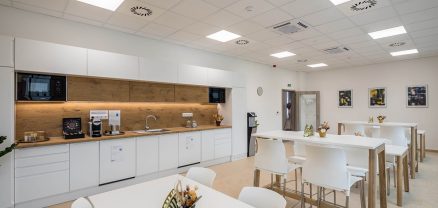The evolution of offices
The evolution of offices
In the beginning…
The concept of the traditional office had come a long way since the 18th and 19th centuries, when offices were located in large open rooms with rows of desks and no partitions. The design was meant to maximize space and promote collaboration.
As time went on, the concept of office space evolved, and different design approaches were introduced to help businesses operate more efficiently and create a better work environment for employees.
Meet the cubicle
In the 1960s, the cubicle was introduced as a way to provide workers with privacy and reduce distractions. Cubicles became a popular office design in the 1980s and 1990s. However, while cubicles offered a sense of privacy, they also created a sense of isolation, leading to decreased communication and collaboration among coworkers.

The grand office opening
In the early 2000s, the open office concept became popular, with the idea that accessible, collaborative workspaces would lead to increased creativity and productivity.
Open offices often feature shared spaces and fewer walls or partitions. While open offices were initially thought to be a great way to promote teamwork and encourage communication among coworkers, studies have shown that they can lead to a decrease in productivity due to noise and distractions.

Lex flexible
In recent years, the trend towards flexible workspaces has emerged, with an emphasis on creating spaces that can be easily adapted to meet the changing needs of workers.
This includes features such as movable walls and furniture, and technology that enables remote work. The idea behind flexible workspaces is to create a work environment that is adaptable to the needs of employees, allowing them to work in a way that best suits their needs.

Let’s get hybrid
With the rise of remote work during the COVID-19 pandemic, hybrid workspaces that combine elements of the office and home have become increasingly popular.
These spaces may include individual workstations, collaboration areas, and technology that enables remote communication and collaboration.

The concept of hybrid workspaces is centered around the idea of giving employees the flexibility to work from anywhere, while still providing the benefits of an office environment.
As businesses continue to evolve, so do office spaces. The goal of office design is to create a space that is conducive to productivity and encourages collaboration among coworkers. While there is no one-size-fits-all approach, businesses must evaluate their needs and determine what type of office environment is best for their organization.
With the rise of technology and the shift towards remote work, the concept of the office will continue to evolve, and new design approaches will emerge to meet the needs of businesses and employees.
In conclusion, the evolution of offices has come a long way from the rows of desks of the past to the hybrid workspaces of today. The modern office environment is designed to maximize productivity, encourage collaboration, and promote flexibility among employees. As businesses continue to adapt and evolve, the concept of the office will continue to change, and new approaches to office design will emerge to meet the needs of the future.

Do not hesitate to contact us
Get in touch, if you have any question

